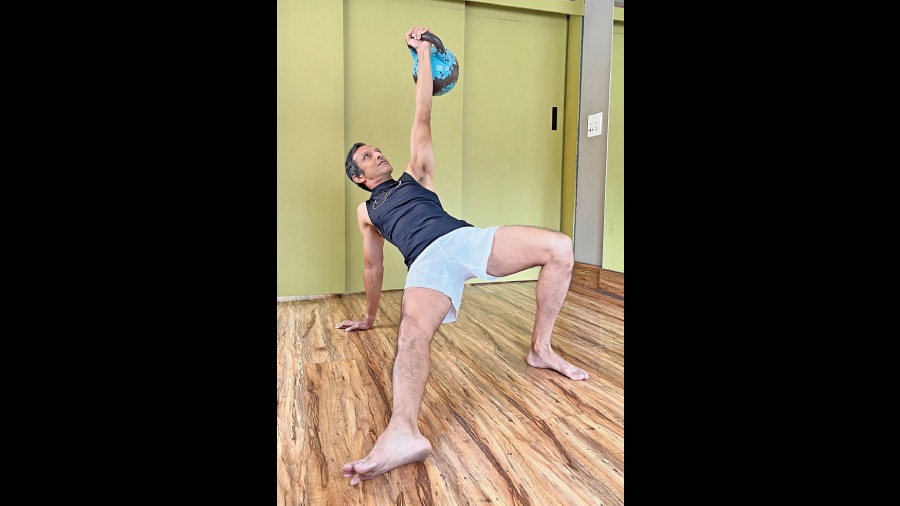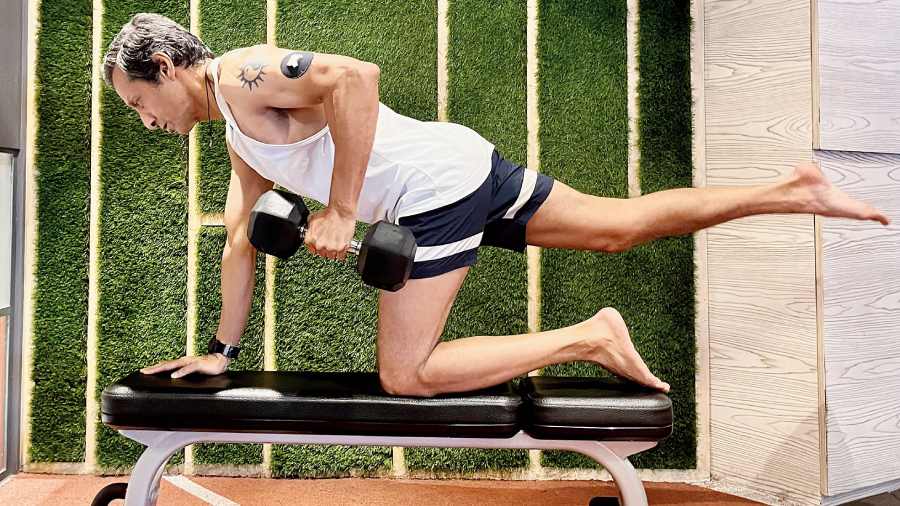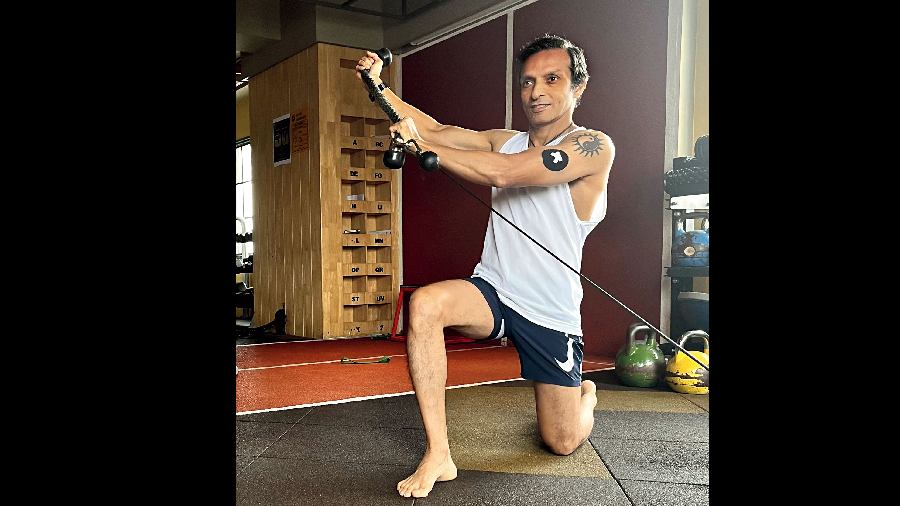Functional training has perhaps been the most influential and popular trend in the fitness world in the last two decades. Most people choose the free-flowing and sleek movements of an athlete over the isolated movements of bodybuilding. Even from an aesthetic point of view, the streamlined and sinewy physique of a gymnast, surfer or martial arts expert appears to be the gold standard in the training world.
What is functional training?
Functional training should be thought of as a system of exercise or movement that is flowing through a continuum and very similar to the movements that we make in daily life. The wide range of activities that we perform on a daily basis — such as pushing, pulling, twisting, turning and climbing — all take place in a continuous and flowing motion in three planes of movement — sagittal (front-to-back), frontal (side-to-side) and transverse (horizontal).
Simply put, it means training and choosing movement and exercises in such a manner so that the gains through it will benefit the individual’s daily activities. For example, doing lunges in the gym will help the person to negotiate a flight of stairs carrying a bag (or heavy load) much better. Doing deadlifts will help a person’s bend-and-pick-up posture and mechanics and enable him/her to pick up heavy objects from the floor effortlessly. Functional training, according to Cedric Bryant, means training to improve “the coordinated working relationship between the nervous and muscular system”.
The rationale behind FT
The main objective of functional training is to achieve a “carry over” benefit derived from the movement and transfer it to another movement which is required in daily life. Exercises that isolate single joints and muscles only help to train individual muscles and not movements and have less functional value.
Brain behind brawn
The human brain, which controls all muscular movements, thinks in terms of whole and complete movements and not in terms of individual muscles. Beevor’s Axiom is the idea that the brain does not recognise muscles, only movements. This theory was coined by Dr Charles Beevor, an English neurologist who presented his theory via a series of four lectures from June 3 to July 4, 1903 before the Royal College of Physicians of London. His experiments showed that when an area of the cortex was stimulated, the body responded with a movement, not a single muscle.
Depending upon your goals, every exercise has the potential to be functional in some way but multi-joint, multi-muscle movements tend to provide the most bang for your buck.
Benefits of functional training:
FT is great for building speed, agility, coordination, proprioception and improving metabolic fitness. It also offers the following benefits:
ß Improves posture
ß Increases range of motion
ß Great for flexibility and mobility.
ß Increases muscular and cardiovascular endurance.
ß Helps muscles recover faster after injury.
ß Enriches athletic performance.
Does functional training burn fat?
By choosing exercises that recruit more joints and muscles rather than isolating individual muscle or muscle groups, you can burn more calories with FT. More calories burnt will ultimately lead to more fat loss. Coupled with a negative calorie intake and sensible eating plan, FT is a great way to knock off extra fat.
Can I do functional training every day?
Functional training differs from traditional body-building protocols in a way that there is really no “leg-day” or “back-day”! Functional training routines will address multiple areas of the body and can be performed every day without the fear of over training or pattern overload.
Is it for everyone?
Yes, the beauty of functional training is that it can be regressed and progressed to suit every kind of person with varying skill and fitness levels. For instance, just a squat pattern can be progressed as follows: Supported or assisted squat<-> Swiss ball squat<-> goblet squat<-> back squat<-> front squat <-> overhead squats.
My top four functional movements
Chop and lift: Chopping is a downward diagonal movement across the body from a high position to a low position and lifting is the upward diagonal movement from a low position to a high position. They are essentially mirror images of each other. You will need a cable or functional trainer to perform this exercise. The concept behind the C& L is beautifully explained by top S& C and Rehabilitation expert, Gray Cook: “Most torso (back, neck, shoulders and so on) injuries take place because of imbalances. The torso can be divided into four quadrants: lower-left, lower-right, then upper-left, upper-right. This movement helps you to identify and rehabilitate your single weakest quadrant.”
The chop is always done before the lift, as you will use heavier weights for the former. The goal is to find your weakest quadrant and work to restore symmetry.

Turkish Get-Up (TGU): If Gray Cook could pick one movement from my list, I know he would choose the TGU, or simply, the Get-Up. This is the movement that he used the most to rehabilitate star LPGA golfer Michelle Wie after her back injury, along with the basic swing. The GU is a brilliant combination of nine discrete movements, which, in combination, addresses all of the major muscle groups and planes of movement.
It is a complex move and can be quite frustrating. View it, however, as a long-term investment and practise it for a few moments before each workout and you will be able to master it soon. Here is Gray Cook’s take on the TGU: “Am I actually saying that you can be a world-class athlete and only do a TGU and swings for injury prevention? Yes, pretty much.”

Kettlebell swing: If I could pick one exercise that I would recommend you do every day, it would be the basic swing. The muscles of the hip play such a key role in so many human movements that I cannot reiterate the importance of hip extension enough. The swing builds strong glutes and hamstrings through powerful and explosive hip extensions. It also disciplines the lower back and quadriceps to act as major stabilisers in this movement. The swing activates the entire Posterior Oblique sling and has huge “carry-over” benefit into sports and other daily activities.

The two-point row on bench: This exercise is a great way to introduce an element of instability to an already challenging exercise thereby recruiting the entire Deep Longitudinal Sling (see my article Newton’s Way to Move in a previous t2oS edition). The anti-rotation element makes it even more demanding and it’s truly a big bang exercise for the entire kinetic chain. You can choose your weights based on the expertise and ease of execution.
Ranadeep Moitra is a strength and conditioning specialist and corrective exercise coach
